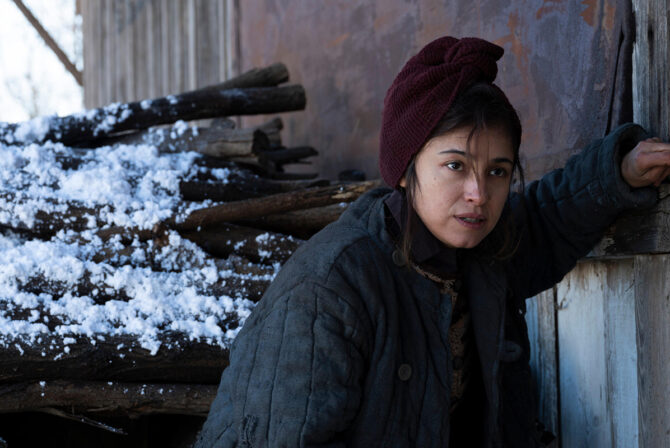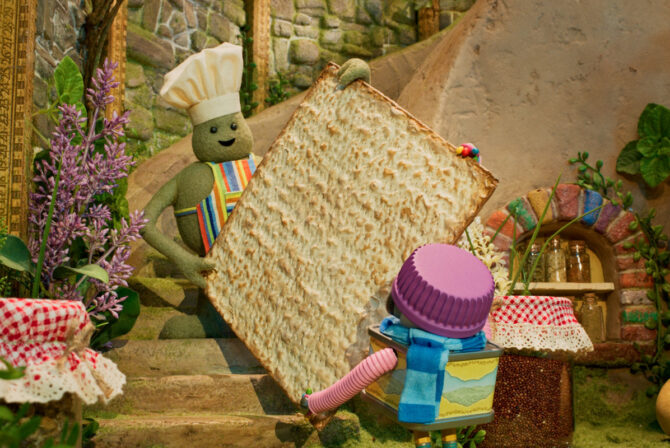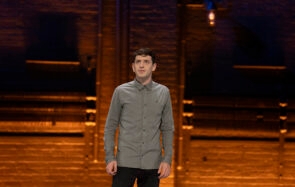In our ketubah (marriage contract), that my husband and I wrote ourselves, we included the kinds of things that we wanted to foster in our home. This included “tolerance and understanding” and “respectfulness of all people.”
This has played out in many ways, but one of the most important has been how our children interact with people with disabilities in their lives. Somewhat surprisingly, my children (ages 2 and 5) have already had a lot of personal experiences with disability, even though they, themselves, do not have any.
Here are some ways that we try to help them understand the disabilities in their worlds:
1. We try to dispel the stigmas that are often associated with disabilities before our children understand that there are stigmas.
One of my son’s closest friends, “Sam,” was born without part of one of his arms. Sam was always one of the few kids who could keep up with our son. They ran and played hard. When our son eventually asked about Sam’s arm, we answered his questions and made sure to point out that it doesn’t really affect Sam in a lot of ways, citing many things the two kids did together. When our kids meet someone with a disability, we also make sure that they are referring to the whole person rather than the disability of the person. So, our family friend, “Ben,” is not the “the blind boy;” he is just Ben.
2. We draw parallels to their own worlds that are simple and age-appropriate.
Our friend, “Cecilia,” a mother of two, suffered a stroke several years ago and is in a wheelchair. While in a bathroom that Cecilia used, they noticed her commode and asked about it. I told them that it was a lot like their potty seats; it just helped her go to the bathroom.
3. We emphasize that people are born different or are different from each other.
When our son finally asked about Sam’s arm, we said that that was how he was born, just like our son was born with a peanut allergy or our daughter was born with blond hair.
4. We encourage them to think about what it would be like if they had a certain disability.
Ben, who is exactly the same age as our son, was born with a rare disease called Norrie’s Disease and is blind. Again, it took the kids a while to ask questions about Ben’s blindness, even though we saw him several times a year. In trying to understand Ben’s experiences, they sometimes closed their eyes and tried to navigate their space as they have seen Ben do.
When shopping for Ben’s birthday present, I told my son what kinds of things to look for: something that he didn’t need his eyes for. My son immediately found a toy truck. While it was a good choice, they have a lot of trucks in their house. I sent him looking again. He found a few more items and, together, we thought about whether or not Ben would be able to play with it: not a card game because he couldn’t see the cards; not a clock because he couldn’t see the clock. The activity was fascinating and very informative for my son about what Ben could and couldn’t do with toys. Finally, we found some sensory blocks that we were both satisfied with. I decided this was an excellent exercise for him and it was one I would want to do again.
5. We encourage them to ask questions but to do so politely.
Our kids are curious creatures who simply want to understand their worlds. From my own experiences, I know that it is not uncommon for people with disabilities to want other people to understand them. Our daughter kept asking why Cecilia “talked funny.” Instead of being embarrassed by her direct and blunt question, I prepared myself to answer it, but Cecilia got there first, saying that she had plastic in her throat. I then further explained that the plastic in her throat helped her talk and compared it to Ben’s use of a cane that helped him get around sometimes. People with disabilities often prefer kids to be allowed to ask these questions rather than shushing them and pulling them away; pulling away adds to the stigma that something is wrong in having a disability.
6. We allow that people’s differences sometimes mean they do things differently, too.
When our son, my goddaughter, and Ben were celebrating their 5th birthdays together, Ben was learning to blow out his candle. The kids all knew he couldn’t see it but were encouraging him until he blew it out. Sam couldn’t hang from the bars at the playground, like my son could, so it was suggested that they find another activity that they could both do. Even for my son, his own peanut allergy puts him in a category of having to eat differently.
Primarily, the disabilities that kids notice early on are physical disabilities such as blindness, partial limbs, or the use of an assistive device such as a wheelchair, cane, or walker. Kids also pick up on behaviors or language that might indicate differences. My children have only learned about my own epilepsy recently but have always noticed that I take medicine and have a Medic Alert bracelet. Other behaviors kids might notice might be things that relate to their worlds: someone who frequently gets tired and is not able to play with them; someone else who might forget things that the child just told them. They are likely to ask questions that we might not be comfortable answering.
Our job is to answer their questions truthfully, in an age-appropriate way, even if it is uncomfortable for us, and help them understand that we are all different from each other.







